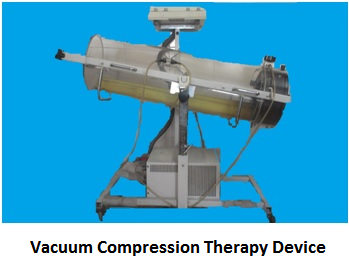Vacuum Compression Therapy: Difference between revisions
(Undo revision 90292 by Sheik Abdul Khadir (talk)) |
No edit summary |
||
| Line 15: | Line 15: | ||
<br> | <br> | ||
== | == Physiology == | ||
<div>The cycles of positive and negative pressure aids in improving circulation. The volume of an elastic vessel can be increased by the application of a vacuum force on its outer wall<ref name="nave">Nave CR, Nave BC, eds. Physcs for the Health Sciences. Philadelphia, Pa: WB Saunders CO; 1975:73-75.</ref></div> | |||
== References == | == References == | ||
<references />. <br> | <references />. <br> | ||
Revision as of 13:19, 17 March 2014
Original Editor - Sheik Abdul Khadir
Top Contributors - Sheik Abdul Khadir, WikiSysop, Kim Jackson and Lucinda hampton
Introduction[edit | edit source]
Device [edit | edit source]
- Vacuum chamber
- Pressure Monitor
- Rubber cuff
- Compressor Unit.
Physiology[edit | edit source]
References[edit | edit source]
- ↑ Akbari et al ; Effects of vacuum compression therapy on healing of diabetic foot ulcers :Randomized control trial ;JRRD; Vol 44; No 5;2007; 631-636.
.







